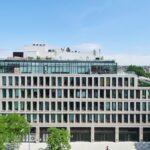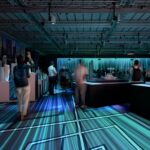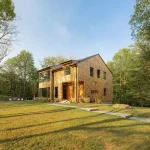Palladio Exhibition, New York Building, Project, Photo, News, Design, Property, Image
Palladio Exhibition Manhattan
RIBA Palladio Exhibition New York, USA : Architecture Information
Mar 19, 2010
Exhibition Palladio and His Legacy : A Transatlantic Journey
RIBA Palladio drawings go to New York for the first time
Palladio and His Legacy: A Transatlantic Journey
Morgan Library and Museum, New York, 2 Apr – 1 Aug 2010
Address: 225 Madison Avenue, New York, NY 10016, United States
Contact Morgan Library and Museum: (212) 685-0008
Thirty-one drawings by Andrea Palladio (1508 – 1580) from the outstanding collection of the Royal Institute of British Architects (RIBA) Trust will be exhibited in New York for the first time ever in an exhibition looking at Palladio’s enormous influence on American architecture. The exhibition Palladio and His Legacy: A Transatlantic Journey will be on display at the Morgan Library and Museum from 2 April – 1 August 2010 before touring to Milwaukee and Pittsburgh in 2011.
Plaster model of United States Capitol + United States Supreme Court (Washington DC)
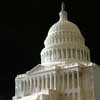
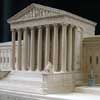
Model by Timothy Richards, Bath, England
Through both his book I Quattro Libri dell’Architecttura, translated into English and widely available at the time, and the popularisation of his ideas in builders’ pattern books, Andrea Palladio became a primary source of inspiration for 18th century American builders. Some of America’s most ambitious public buildings of the late nineteenth and early twentieth century reflect his resurrection of classical architecture. These include the Supreme Court, National Gallery of Art in Washington DC and the New York Stock Exchange.
Plaster model of Monticello (Charlottesville, Virginia) + Drayton Hall (Charleston, SC)
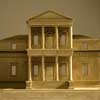
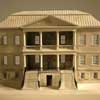
Model by Timothy Richards, Bath, England
Palladio and His Legacy: A Transatlantic Journey will show the development of Andrea Palladio’s style from his early drawings to the impact of Roman texts on his interpretation of classical architecture. The exhibition will also illustrate the influence he in turn had through his own texts. On display with be 31 of Palladio’s drawings alongside I Quattro Libri, pattern books and models of Palladio’s buildings and of American buildings inspired by his classical style by renowned model maker Timothy Richards.
Plaster models of Villa Rotunda (Italy) + Pantheon (Rome)
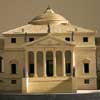
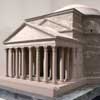
Model by Timothy Richards, Bath, England
Charles Hind, co-curator of the exhibition, H.J.Heinz Curator of Drawings and Archives at the RIBA British Architectural Library and an internationally acknowledged Palladian scholar, said:
“This exhibition is the first time Palladio and American Palladianism have been put together into one show. What is interesting is how many links can be made between Palladio’s vision of ancient Rome and American buildings between the 1740s and the 1940s. We hope it leads people to understand the background to so much classical architecture in the USA.”
To celebrate the quincentenary of Palladio’s birth the RIBA Trust created a major online resource examining the life and legacy of Palladio and the influence of his architecture on Britain, a key stepping stone to his influence on American architecture. This can be viewed at www.architecture.com/palladio
Palladio and His Legacy: A Transatlantic Journey is curated by the RIBA Trust which owns over 330 of Palladio’s 380 surviving original drawings.
Palladio Exhibition New York images from Morgan Library and Museum New York
Royal Academy of Arts Exhibition : Andrea Palladio
New Palladians Exhibition London
Palladio Exhibition, New York – Further Information
ORGANIZATION AND SPONSORSHIP
The exhibition is organized by the Royal Institute of British Architects (RIBA) Trust, London, in association with the Centro Internazionale di Studi di Architettura Andrea Palladio, Vicenza (CISAPalladio), and The Morgan Library & Museum, New York. The plaster models have been created by Timothy Richards, Bath, England.
The exhibition is made possible by the generous support of the Regione Veneto, Richard H. Driehaus Charitable Lead Trust, Dainese, British Architectural Library Trust, The Gladys Krieble Delmas Foundation, Samuel H. Kress Foundation, Center for Palladian Studies in America, Inc, Richard Wernham and Julia West, Andrew D. Stone, William T. Kemper Foundation, and Sir John Soane’s Museum Foundation.
The exhibition is curated by Dr. Irena Murray, the Sir Banister Fletcher Director of the British Architectural Library at the Royal Institute of British Architects; Charles Hind, H. J. Heinz Curator of Drawings and Archives at the BAL and an internationally acknowledged Palladian scholar; and Calder Loth, Senior Architectural Historian at the Virginia Department of Historical Resources. Additional scientific and historical advice is provided by Dr. Guido Beltramini, Director of the Centro Internazionale di Studi di Architettura Andrea Palladio in Vicenza.
Based in Bath, England, Timothy Richards has over many years become internationally known for his detailed plaster models of buildings from around the world. His work is held in many private collections and offers a unique way to help explain and interpret historically important architecture.
Royal Institute of British Architects Trust
The RIBA Trust manages the cultural assets of the Royal Institute of British Architects, founded in 1834 for ‘the advancement of architecture’. It has an internationally recognized collection of over four million books, periodicals, drawings (including over 330 of Palladio’s 380 surviving original drawings), photographs, models and other archives in the RIBA British Architectural Library.
The RIBA is committed to making its collections accessible to the public both through events in the UK and by organizing and contributing to exhibitions around the world. This includes a major online Palladio resource tracking the life and legacy of the architect and his influence on architecture in Britain, at www.architecture.com/palladio
Centro Internazionale di Studi di Architettura Andrea Palladio (CISA)
Founded in 1958, CISA is an organisation dedicated to research in the field of the history of architecture. The activities of the Centre, which are steered by a scientific committee of leading European and North American specialists, include conferences, publications and exhibitions dedicated not only to Palladio but also to aspects of architectural history, from antiquity to the modern age. The Centro’s library, photo and specialised archives are open to the public. The Centre is housed in Palazzo Barbaran da Porto, one of the
most beautiful of Palladio’s palaces. Since 1997 it has been organising exhibitions which are the result of its own research projects and have been enhanced by loans from major museums in Europe.
The Morgan Library & Museum
A complex of buildings in the heart of New York City, The Morgan Library & Museum began as the private library of financier Pierpont Morgan, one of the preeminent collectors and cultural benefactors in the United States. Today it is a museum, independent research library, musical venue, architectural landmark, and historic site. More than a century after its founding, the Morgan maintains a unique position in the cultural life of New York City and is considered one of its greatest treasures. With the 2006 reopening of its newly renovated campus, designed by renowned architect Renzo Piano, the Morgan reaffirmed its role as an important repository for the history, art, and literature of Western civilization from 4000 B.C. to the twenty-first century.
General Information
The Morgan Library & Museum
225 Madison Avenue, at 36th Street, New York, NY 10016-3405
212.685.0008
www.themorgan.org
Hours
Tuesday-Thursday, 10:30 a.m. to 5 p.m.; extended Friday hours, 10:30 a.m. to 9 p.m.; Saturday, 10 a.m. to 6 p.m.; Sunday, 11 a.m. to 6 p.m.; closed Mondays, Thanksgiving Day, Christmas Day, and New Year’s Day. The Morgan closes at 4 p.m. on Christmas Eve and New Year’s Eve.
Admission
$12 for adults; $8 for students, seniors (65 and over), and children (under 16); free to Members and children, 12 and under accompanied by an adult. Admission is free on Fridays from 7 to 9 p.m. Admission is not required to visit the Morgan Shop.
How Palladio’s drawings came to Britain – A History
The very first drawings by Palladio that arrived in Britain were brought back by Sir Henry Wotton (1568-1639), UK Ambassador to Venice (first of three occasions was 1604-12). It is unclear when his drawings were given to Inigo Jones (1573-1652) but it was around the time that Jones went on his own visit to Italy to examine Palladio’s buildings. Inigo Jones acquired many drawings by Palladio in 1614. It is not known for certain exactly how he acquired these – they were possibly given or sold to him by Palladio’s son, Vincenzo Scamozzi. After Jones’s death the drawings went to his pupil, John Webb (1611-1672), whose wife may have been Jones’s illegitimate daughter. Webb bequeathed the drawings of both Palladio and Jones to his son, William Webb, with strict instructions that they were not to be dispersed. He was to “keepe them intire together without selling or imbezzling any of them”. This instruction was ignored and within three years of his father’s death some of the books were for sale, while William’s widow sold most of the drawings to John Oliver (1616-1701). A few of the drawings (by Palladio, Jones and Webb) escaped this sale and were in due course bought by Dr George Clarke who bequeathed them to Worcester College, Oxford, where they remain. Although records mention John Oliver’s ownership of Jones’s drawings, there is not a single mention of Palladio drawings in any 17th century source.
It is likely that before his death John Oliver had already sold the Palladio drawings to William Talman (1650-1719), probably the greatest individual collector of architectural and design drawings Britain has ever seen. He put the drawings in order and many bear his number on the back. His son, John Talman, extended the collection though appears to have sold the Palladio drawings to Lord Burlington shortly after his father’s death in 1719. Lord Burlington’s account notes on 7th April 1720 “To Mr Talmann … for a Parcel of Architectonicall Designs and Drawings by Palladio £170”. Burlington was then aged 26. In 1719 he went to Venice and purchased a large group of Palladio’s drawings that tradition states had turned up in a trunk at the Villa Barbaro at Maser, where Palladio had died in 1580. Unlike Jones’s collection which were principally design drawings and studies for the Quattro Libri, this second group was largely composed of measured drawings and reconstructions of Roman buildings. Over the next 20 years, Burlington worked hard to re-establish Jones’s architecture as the British national style.
On Lord Burlington’s death his property passed to his daughter Charlotte, wife of the future 4th Duke of Devonshire. Although the drawings alternated between Burlington House and Chiswick House they disappeared from view and do not seem to have been looked at by any architect or scholar until 1845. In that year, two founding members of the Royal Institute of British Architects (RIBA), Ambrose Poynter and Thomas Leverton Donaldson, inspected them and published a brief list. The drawings then disappeared again from public knowledge until 1892, when they were placed on loan at the RIBA by the 8th Duke of Devonshire, together with drawings by Inigo Jones and John Webb. Two years later, when the Duke sold Chiswick, the collection was converted to a gift in trust. There are a number of conditions attached to the gift to the RIBA, of which the most remarkable was that should the Institute cease to exist within 25 years of the last surviving great-grandchild of Queen Victoria, the collection should revert to the Dukes of Devonshire. There are still great-grandchildren of Queen Victoria living.
Palladio Exhibition New York information from the RIBA 190310
Location: 225 Madison Avenue, New York, NY 10016, New York City, USA
New York City Architecture
Contemporary New York Buildings
NYC Architecture Designs – chronological list
New York City Architecture Tours by e-architect
56 Leonard Street
Herzog & de Meuron
56 Leonard Street New York
Empire State Building
Shreve, Lamb & Harmon Architects
Empire State Building New York
Giorgio Armani, Fifth Avenue
Massimiliano Fuksas Architects
Giorgio Armani Manhattan
Comments / photos for the Palladio Exhibition New York Architecture page welcome

